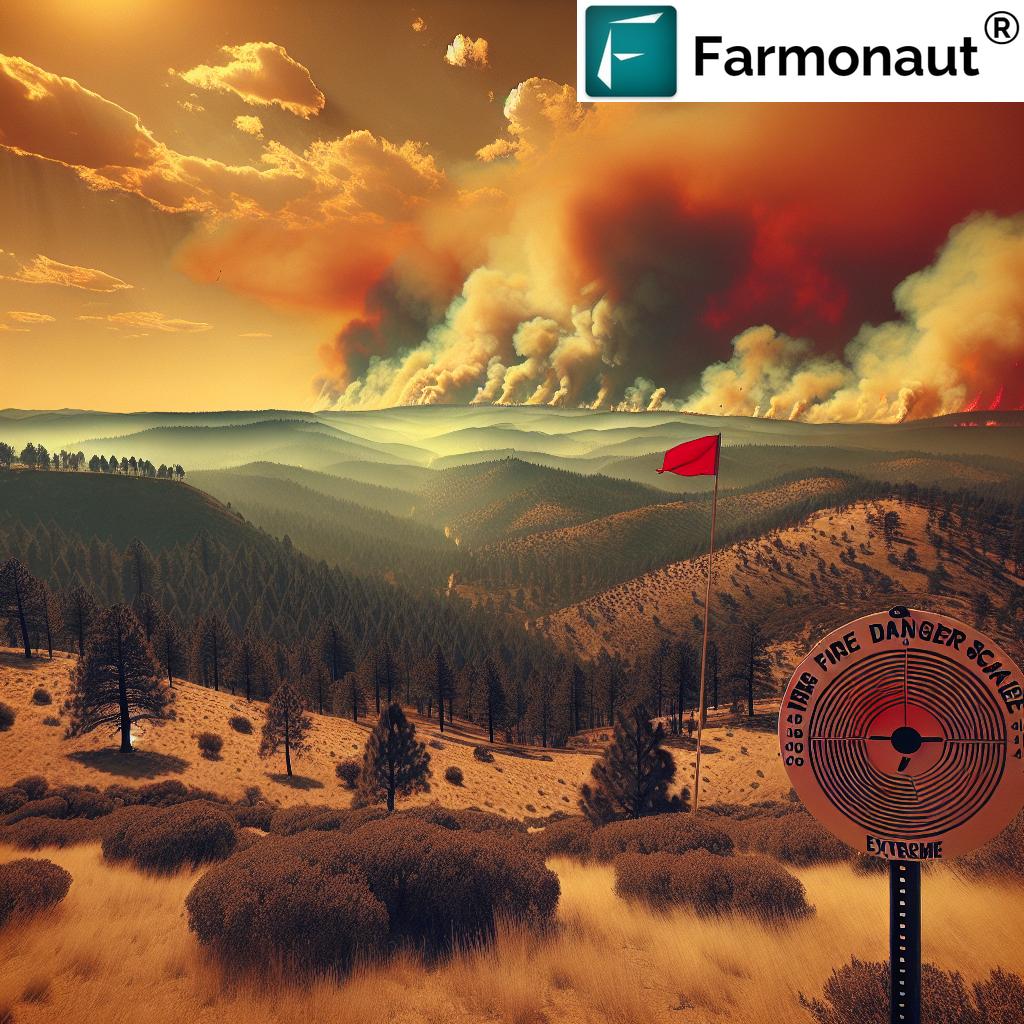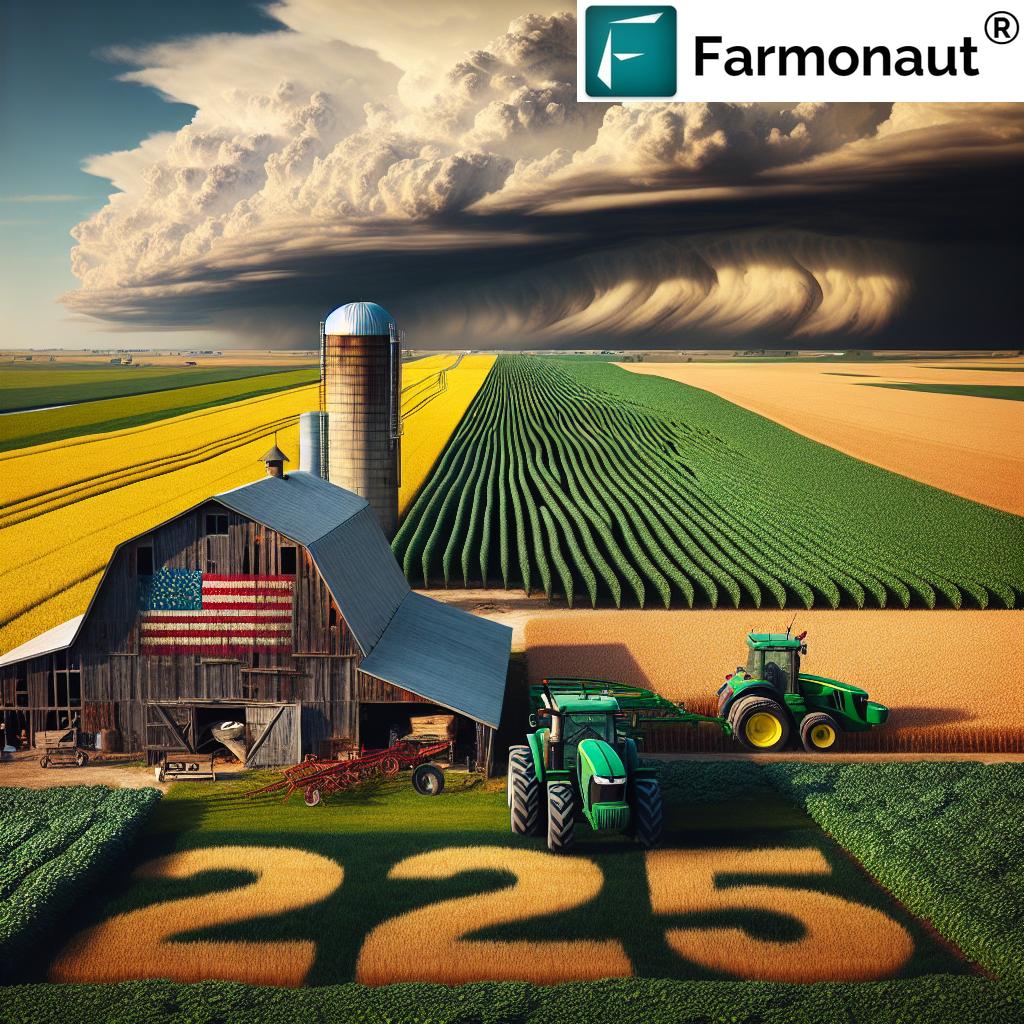Alemany, Albany, Alton & More: Top Farmers Markets 2026
Table of Contents
- Introduction: Farmers Markets Powering Sustainable Agriculture in 2026
- Did You Know?
- The Agricultural Backbone: Supporting Local Farmers
- Promoting Sustainable Agriculture & Environmental Benefits
- Farmers Market Sustainability Impact Comparison Table
- Economic and Community Development Through Farmers Markets
- Sustainability Trivia
- Challenges & The Future of Farmers Markets in 2026 and Beyond
- How Farmonaut Empowers Sustainable Agriculture & Markets
- Frequently Asked Questions (FAQ)
- Conclusion: The Continuing Significance of Farmers Markets in 2026
“Alemany, Albany, Alton, and Rogers farmers markets collectively support over 1,000 local growers annually by 2025.”
Introduction: Farmers Markets Powering Sustainable Agriculture in 2026
Farmers markets such as alemany farmers market in San Francisco, albany farmers market in New York, alton farmers market in Illinois, rogers farmers market in Arkansas, the asian farmers market in metropolitan districts across the U.S., and arnes farmers market in Europe, are evolving into indispensable pillars of the agricultural sector and food supply chain as we advance into 2026. These markets are no longer limited to just selling fresh produce. They have become critical platforms for supporting local farmers, promoting sustainable agriculture and environmental benefits, invigorating local economies, and improving community resilience.
As consumers increasingly express a preference for transparency, traceability, and eco-consciousness in their food choices, these markets continue to play a vital role. Through direct relationship building between producers and consumers, innovative sustainability practices, and robust community programs, farmers markets like alemany, albany, alton, and rogers set the bar for sustainable agriculture and economic resilience for the foreseeable future.
This article explores the evolving significance of these markets within the agricultural sector and the broader impact on sustainable farming, community resilience, and local economies as we look toward 2026 and beyond.
The Agricultural Backbone: Supporting Local Farmers at Markets Like Alemany and Albany
At their core, farmers markets represent the backbone of sustainable agriculture by bridging the gap between producers and consumers directly. Rather than relying on lengthy and complex supply chains and industrial agribusinesses, these venues allow small-scale and family-run farms to thrive by selling fresh, organic, and often heirloom varieties of fruits, vegetables, unique herbs, and artisanal goods directly to their communities.
The alemany farmers market in San Francisco and the albany farmers market in New York act as pioneering platforms for this transformation. Here’s how they exert this influence:
- Direct-to-consumer selling increases farmers’ profits by cutting out intermediaries, allowing them to retain a greater share of their income and reinvest in sustainable practices and innovative production methods.
- Reduces the reliance on lengthy and resource-intensive supply chains, lowering the risk of food waste and increasing traceability for buyers.
- Empowers producers to connect directly with their customers, building a foundation of trust, authenticity, and pride in the local food system.
In recent years, increased consumer preference for traceability – knowing where and how their food is produced – has bolstered the importance of these markets. At the asian farmers market, for instance, buyers seek authentic, culturally specific produce, such as unique herbs, spices, and specialty fruits that are rarely available in conventional supermarkets. This trend has elevated the status of niche farmers, encouraged the preservation of traditional crop varieties, and promoted diversity in food offerings.
As farmers markets continue to play an indispensable role in the agriculture and food supply chain in 2026, the relationship between local growers and their communities embodies both economic sustainability and environmental stewardship.
Promoting Sustainable Agriculture & Environmental Benefits at Leading Markets
One of the most vital roles of farmers markets like alemany, albany, asian, alton, and rogers is the promotion of sustainable agricultural practices and the environmental benefits that flow from them. Local markets have become centers for eco-friendly innovation in the agriculture sector, pushing the envelope far beyond providing just fresh produce.
Sustainability as Core Mission: Organic & Eco-Conscious Practices
The alemany farmers market is renowned for its emphasis on organic and pesticide-free produce. This approach—also gaining traction at albany, alton, and rogers farmers market—reduces soil degradation, preserves water systems by preventing chemical contamination, and promotes biodiversity by encouraging farmers to cultivate a wide range of crop varieties.
- Organic farming practices ensure that both the soil and surrounding ecosystems remain healthy and productive, supporting food security over the long term.
- Local sourcing reduces food miles—cutting transportation emissions and lowering the overall carbon footprint of each market’s produce supply chain.
- The increasing integration of agroforestry, cover cropping, and regenerative techniques helps to sequester carbon, protect against climate change impacts, and restore vital ecosystem processes.
- The use of compostable packaging, water-saving irrigation, and on-site renewable energy are notable eco-friendly initiatives adopted by these leading markets.
As climate and environmental concerns intensify globally, these markets demonstrate how supporting sustainable agriculture directly translates to wider community and planetary health.
Interested in measuring and minimizing your farm’s environmental impact? Discover Farmonaut’s Carbon Footprinting Solutions that help monitor carbon emissions across large-scale farms and supply chains while complying with evolving sustainability standards.
Championing Biodiversity Through Local and Asian Farmers Markets
The asian farmers market model illustrates the power of culturally specific crops and unique varieties in promoting biodiversity and crop resilience. Buyers are exposed to traditional foods, specialty spices, and rare herbs that might otherwise be lost in monoculture-focused conventional markets. Encouraging niche farmers to grow these crop varieties helps preserve traditional knowledge and empowers urban and rural communities to retain a connection to their agricultural roots.
Regenerative & Climate-Smart Farming in Action
Both the rogers farmers market in Arkansas and the alton farmers market in Illinois have been at the forefront of regenerative agriculture adoption in 2025-2026, incorporating:
- No-till cropping and rotational grazing to restore soil health
- Crop diversification to reduce pest cycles and enhance resilience
- Onsite composting and rainwater harvesting for efficient resource use
These innovations demonstrate how markets can drive entire regions toward eco-friendly, resilient, and productive systems for years to come.
Transparency from farm to table is vital for trust and accountability. Explore Farmonaut’s Blockchain-Based Product Traceability for seamless tracking of produce origins, certifications, and supply chain movement.
Farmers Market Sustainability Impact Comparison Table
To understand the comparative strengths and contributions of leading markets in the U.S. and Europe, here’s a structured overview focusing on sustainability, economic, and community impact:
| Market Name | Location | Estimated Annual Visitors (2025) | No. of Local Vendors | % Organic Produce | Notable Eco-Friendly Initiatives | Impact on Local Economy ($/Year) | Community Programs Offered |
|---|---|---|---|---|---|---|---|
| Alemany Farmers Market | San Francisco, CA | ~450,000 | 120 | 80% | Pesticide-free focus, compostable packaging, renewable energy | $29M+ | Nutrition workshops, food access for low-income, farm tours |
| Albany Farmers Market | Albany, NY | ~285,000 | 75 | 70% | Rainwater harvesting, urban composting, zero waste policy | $16M+ | Cooking demos, farm camps, youth training |
| Alton Farmers Market | Alton, IL | ~95,000 | 45 | 65% | Soil restoration projects, integrated pest management | $6M+ | Farm-to-school, community gardens |
| Rogers Farmers Market | Rogers, AR | ~110,000 | 60 | 77% | Regenerative agriculture, solar market canopies | $8.5M+ | SNAP doubling, crop swaps, sustainability fairs |
| Asian Farmers Market | Multiple US Metro Areas | ~320,000 (combined) | 90 | 60% | Diverse crop preservation, cultural culinary initiatives | $22M+ | Language-access events, cultural festivals, nutrition education |
Note: Data is indicative for comparative understanding, highlighting sustainability, economic, and social innovations within each market for 2025-2026.
Managing operations at scale? Farmonaut’s Large-Scale Farm Management Platform equips market coordinators and multi-farm cooperatives with precise satellite monitoring, resource scheduling, and compliance tracking.
Economic and Community Development Through Farmers Markets
Besides championing sustainable agriculture, farmers markets like alemany, albany, alton, rogers, asian, and arnes drive multidimensional economic and community development. These hubs do more than sell produce; they are active forces revitalizing urban, suburban, and rural economies across the U.S. and Europe.
- By supporting local farmers and small businesses, these markets create jobs, nurture entrepreneurship, and strengthen economic resilience at the neighborhood and regional level.
- Intelligent market integration—as seen at albany farmers market—stimulates adjacent businesses such as coffee houses, artisan shops, and restaurants, forging a vibrant urban fabric.
- Rural markets like alton and rogers serve as anchor points, offering critical food access to communities that might otherwise lack fresh, organic produce options.
- Diverse community programs—workshops, culinary demonstrations, youth training, and nutrition initiatives—enhance local knowledge on healthy living and sustainable practices.
Cultural Integration and Knowledge Sharing
Unique market models such as the asian farmers market also play an outsized role in cultural integration:
- Encouraging diverse populations to participate as vendors and consumers, reflecting local and global foodways.
- Facilitating knowledge exchange on heritage crops, cultivation practices, and culinary traditions.
- Bolstering the social fabric by fostering inclusivity, mutual respect, and cultural celebration.
Meanwhile, arnes farmers market in Europe increasingly offers workshops on agroecology and organic farming practices, ensuring ongoing community engagement and regional knowledge advancement as sustainability issues become more urgent in 2026.
“Over 70% of vendors at these top 2026 markets use eco-friendly practices, advancing local sustainability efforts.”
Need secure financing for farm upgrades or expansion? See how Farmonaut’s Crop Loan and Insurance Platform uses real-time satellite data to streamline verification and reduce risks for agricultural lending and insurance providers.
Challenges & The Future of Farmers Markets in 2026 and Beyond
As integral as farmers markets are to sustainable agriculture and economic resilience, they also face a series of challenges requiring creative solutions:
- Regulatory hurdles: Varying food safety, labeling, and business licensing policies can hinder entry for new farmers and small businesses.
- Competition from large retailers: Large grocery chains are expanding their local and “organic” offerings, sometimes displacing traditional farmers markets.
- Climate variability: Increased weather unpredictability—droughts, floods, and temperature shifts—puts local food production at risk and tests market resilience.
- Supply chain logistics: Ensuring consistent access to cold storage, timely transportation, and market infrastructure is key for quality and year-round operation.
Despite these barriers, farmers markets are evolving rapidly:
- They are adopting new technologies, from mobile apps for online ordering to on-site renewable energy and intelligent fleet management solutions for eco-friendly deliveries (learn more about Farmonaut’s Fleet Management Solutions).
- The introduction of digital traceability (see above) and blockchain authentication enhances transparency, supporting ongoing consumer trust in 2026 and beyond.
- Continued integration of knowledge-sharing forums, community resilience programs, and policy advocacy ensures that markets remain vital platforms for agricultural innovation and adaptation.
- Workshops and education on agroecology and climate-adaptive practices are increasingly embedded, especially at venues like arnes farmers market in Europe.
How Farmonaut Empowers Sustainable Agriculture & Markets
In the landscape of sustainable agriculture, advanced monitoring and transparency technologies now play a pivotal role. We at Farmonaut are dedicated to making satellite-driven insights affordable and accessible to local growers, cooperatives, government agencies, and anyone aiming to strengthen the resilience and sustainability of their operations.
Farmonaut’s Satellite, AI, and Blockchain Capabilities
- Satellite-Based Monitoring: Our powerful, multispectral imagery helps farmers, market administrators, and policymakers monitor crop health (NDVI), soil conditions, and even infrastructure integrity over large and small areas.
- AI Advisory System (Jeevn AI): Through our platform, users receive real-time weather forecasts, customized agronomic advice, and localized strategies to optimize yields and resilience—even during unpredictable climate events.
- Blockchain-Based Traceability: We provide robust digital certificates and transparent records linking production details from farms through food supply chains, supporting both regulatory compliance and consumer trust at farmers markets.
- Environmental Impact Monitoring: Our carbon footprinting tools help measure and reduce emissions for sustainable agriculture and circular economy goals.
Learn more about Farmonaut’s Crop Plantation, Forest Advisory & Resource Management features for next-generation farm planning and environmental stewardship.
Supporting the Community—From Market Stall to Satellite Insights
Whether you are a smallholder grower selling at alemany farmers market, a regional cooperative at arnes farmers market, or a metropolitan market director striving for sustainability goals, we offer scalable, cost-effective digital solutions to:
- Monitor and optimize crop health and resource allocation
- Track organic certification or regenerative compliance
- Ensure product authenticity and digital traceability through every step of the supply chain
- Map and manage environmental impact for grant and policy reporting
Frequently Asked Questions (FAQ) – Top 2026 Farmers Markets & Sustainability
-
What sets the alemany, albany, alton, and rogers farmers markets apart?
These markets are renowned for their direct connection between farmers and consumers, high percentage of organic and eco-friendly produce, cutting-edge sustainability initiatives, and strong economic and community programs fostering local resilience. -
How do farmers markets contribute to sustainable agriculture?
They promote organic and regenerative practices, encourage crop diversity, reduce reliance on carbon-heavy supply chains, and offer farmers higher returns for sustainable production methods. -
Are these markets only focused on selling produce?
No, markets like alemany and albany also offer workshops, community nutrition programs, educational fairs, and serve as platforms for innovation in traceability and climate adaptation. -
What role does technology play in the operation or advancement of these markets?
Technology, especially satellite monitoring, AI advisory, and blockchain traceability (such as Farmonaut provides), enables efficient resource use, better environmental tracking, product authenticity, and direct-to-market connections. -
How do I know if a farmers market or food is certified organic or sustainable?
Most reputable markets display or track certifications on-site and now offer digital traceability tools ensuring consumers have full transparency on farming practices. -
What impact have these markets had on local economies?
They have generated millions each year for local economies, significantly boosted local employment, created new business opportunities, and strengthened the resilience of food systems against global shocks. -
Are there ways to participate or access these markets digitally?
Yes, multiple markets now offer digital ordering, traceability apps, and satellite-driven crop status analytics, increasing accessibility for urban and rural populations alike. -
Which tools does Farmonaut provide for market vendors and coordinators?
Farmonaut offers scalable monitoring, AI advisory for climate-smart farming, blockchain traceability, fleet and resource management tools, and environmental impact assessments for entire agricultural operations, suitable for farmers and market authorities alike.
Conclusion: The Continuing Significance of Farmers Markets in 2026
As communities and the agriculture sector advance into 2026, farmers markets like alemany, albany, alton, rogers, asian, and arnes are more than vital hubs—they are lighthouses guiding the integration of sustainable agriculture, eco-conscious practices, resilient local economies, and community well-being. Through direct-to-consumer selling, championing organic and regenerative production, embracing technological advances, and fostering robust community and cultural integration, these markets ensure:
- The health of both the land and people through organic and climate-adaptive solutions
- The prosperity of farmers by supporting direct, equitable market access
- A vibrant and resilient supply chain capable of weathering future challenges
- Perpetual innovation via education and sustainability leadership
By continually supporting, expanding, and innovating within the farmers market ecosystem, society secures a future that prioritizes responsible agriculture, inclusivity, and environmental health. These markets are not just points of commerce; they are platforms for meaningful change—ensuring sustainability, resilience, and vitality from 2026 and beyond.
For everyone contributing to or benefitting from these markets, the promise is clear: a thriving, sustainable, and connected world—rooted in the community, powered by technology, and led by visionary agriculture.
Ready to transform your farming or farmers market operations? Experience precision, transparency, and sustainability with Farmonaut’s suite of innovative satellite and data solutions—trusted by agricultural leaders worldwide.










